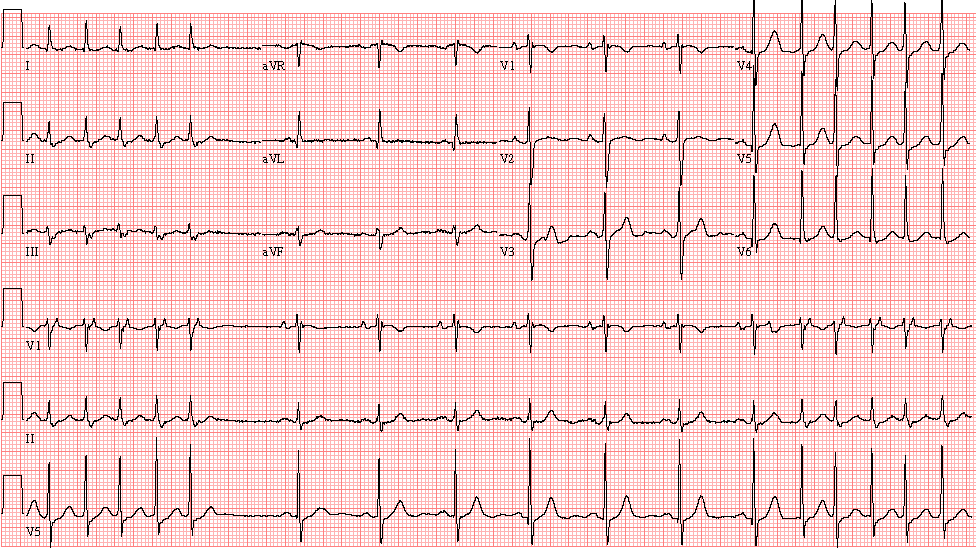Case 26: An 88-Year-Old Woman in the Emergency Department
An 88-year-old woman is sent to the ED by her family physician because of frequent, brief episodes of paroxysmal palpitations during the past 24 hours:
- AV nodal re-entrant tachycardia 180/min, interrupted by a 6 second period of sinus rhythm
This is a good example of the typical onset and end of AVNRT. The arrhythmia is induced by a premature atrial stimulus (PAC) that blocks in the anterograde fast pathway (that is still refractory) and is conducted down through the slow pathway (that has a shorter refractory period). Subsequently, the stimulus reaches the fast pathway that is no longer refractory and becomes available for antegrade conduction to the ventricles and retrograde conduction to the atria.
This explains the long PR interval of the PAC (360 msec) and the subsequent short RP interval. When the AVNRT terminates, the stimulus is blocked in the slow pathway, and thus the arrhythmia ends with a P wave.

ECG ID: E705